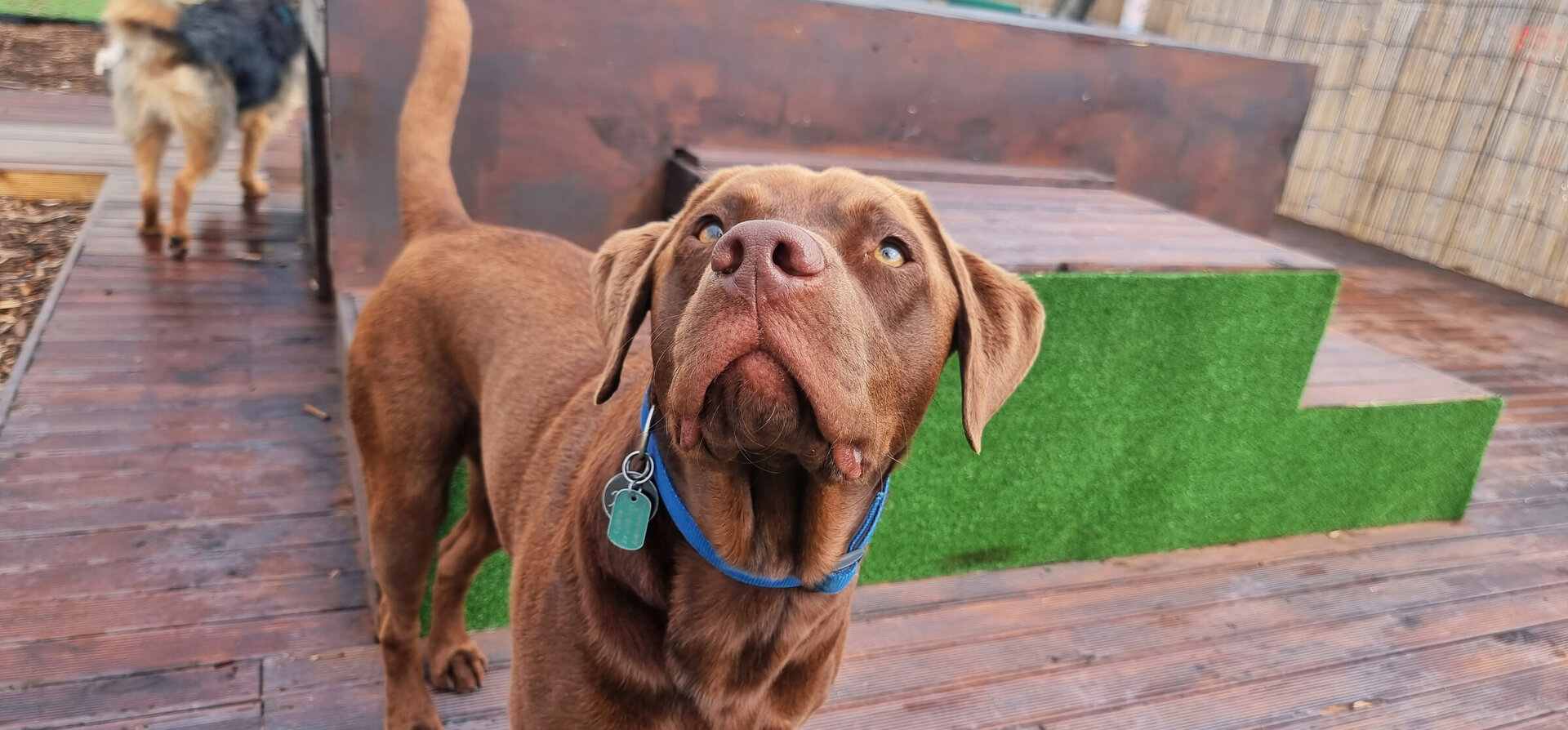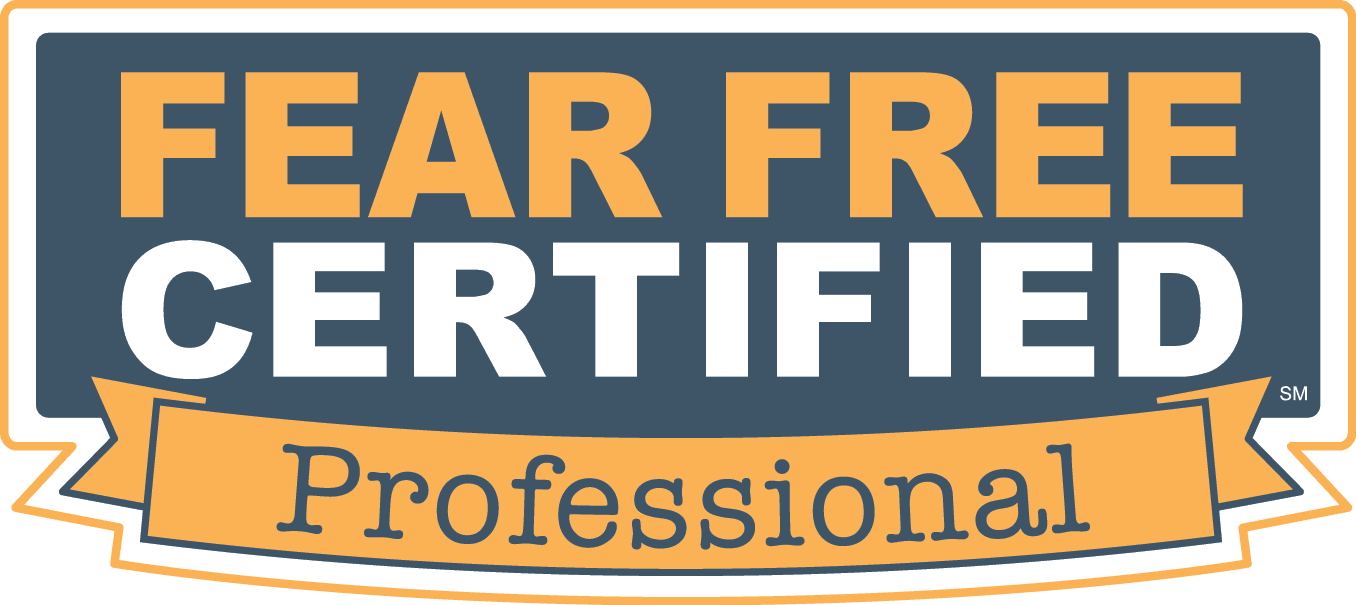As seen, even in dogs emotions tend to get in the way. To put yourself in Rover's shoes, imagine suffering from arachnophobia (fear of spiders, that is), being placed in a container full of tarantulas and being asked to solve a math problem. Most likely you would hardly be able to think cause your adrenaline is running so high and your body is concentrating on more important functions! So why are we so surprised when our companion animals react to stimuli in their environment? Perhaps because as part of domestication we want them to adhere to human etiquette and act in a more "civilized way".
If you've ever spoken to a dog trainer or a dog behavior professional, you may have heard about dog threshold levels. But what exactly are they, and why do they make such a difference in the outcome of training and changing behavior in dogs? There are many good reasons.
Threshold levels play a prominent role in any desensitization program when done well. Actually, threshold levels are at the heart of desensitization and are crucial for the outcome. They can make the difference between desensitizing a dog or sensitizing it to triggers. When threshold levels in dogs are ignored, you are most likely "flooding," which is the opposite of desensitization.
What Are Threshold Levels in Dogs?
According to my dictionary, it means " The point that must be exceeded to begin producing a given effect or result or to elicit a response." In simple words, the threshold is an imaginary line drawn to separate reactivity and non-reactivity. This means that before that imaginary line, you have a dog "sub-threshold," and beyond that line, you have a dog "over the threshold." For desensitization to work well, you need to be before that threshold line, in an area where the dog does acknowledge the stimulus but it does not have any major effect on the dog. Go over it and you will likely have a dog that overreacts to the stimuli and its behavior starts breaking down.
In order to determine threshold lines, you need to be able to "read" your dog well. In other words, you need to be able to constantly scan those subtle signs of relaxation, alertness and stress so you can intervene accordingly. Different trainers have different "interpretations" of over or under threshold. For some, a dog is under threshold when it is calm, almost sleepy, for others a dog is under threshold when the dog is stressed, but not stressed enough to react by barking, lunging etc. In my opinion, you definitively do not want a dog on edge that is too stressed to learn and cognitively function, but you may want a dog that acknowledges the stimulus but without growing concerned about it.
Myth:
"my dog is not barking, so he's under threshold or "my dog is taking treats, so he is definitely under"." I would not rely on lack of vocalizations as proof of working under threshold and I would not rely on taking treats as reliable proof either. Indeed, I have seen nervous dogs who didn't bark but their whole body was sending stress signals left and right and I have also seen dogs capable of taking treats, gulping them down but still not being able to cognitively function and learn during a desensitization and counter-conditioning program. Note: There are some dogs though that naturally take treats fast. It's good to know the individual dog and how he takes treats at home in a natural setting before making assumptions. We will see a few examples of dogs over and under threshold in the next paragraphs.
*Note: not all dogs, when over threshold, manifest their emotions through visible snarling, barking and lunging. Some freeze, become very subdued, up to reaching a state of learned helplessness; whereas others may become distracted or do something else such as getting start fooling around and getting a case of zoomies. When facing an adrenaline rush, dogs may indeed go into fight, flight, freeze, or fool around.
Dog Over and Under Threshold: Some Examples
So how do you know when a dog is over and under threshold, and does this apply only to dog aggression or other emotions? Let's take a look. Telling if a dog is under or over threshold may look like an easy task, but it is easier said than done. For a non-expert, the difference between under and over threshold may be simply just the presence or absence of vocalization. But as we have seen, there is much more than noises in dogs. Just as in people, you do not need to scream to manifest fear!
This is why it is best to hire a professional when dealing with dog behavior problems. A professional may be able to assess the most subtle behavior changes by looking at the dog's body; this can be a quick lip flick, a slight movement of the corners of the mouth, or a slight evidence of piloerection (raised hair).
These signs when noticed early, tell the expert that the dog is starting to get stressed, and the behavior is starting to fall apart. Quick intervention is needed to prevent a reaction and going from under threshold to over.
Threshold levels are not only used for gauging reactivity but for other emotional states as well, fear, excitement and anxiety for example. Remember: no matter how good we can be at "reading dogs" we will never get into their mind and be able to determine exactly how they are feeling. For instance, some dogs suffering from separation anxiety may still be able to eat when their owner is away, but are still very tense and anxious!
Even the most experienced dog behavior professionals may have their "oops" moments when they are desensitizing a dog and the dog unexpectedly reacts and goes over threshold. No matter how systematically you work, there are always triggers that may make your dog more likely to go over threshold. Things as subtle as the owner's tone of voice or emotional state, the weather, background noises, and previous exposure to triggers can make a difference!
How Do You Help a Dog Stay Under Threshold?
Desensitization. In other words, systematic desensitization entails presenting frightening stimuli in such a way that it looks, sounds, and appears less frightening. You, therefore, make it smaller, less noisy, and less intimidating.
If you are afraid of riding big horses, a pony ride may be a good start. Back to dogs, say your dog is scared of thunder? You play a recording of a thunderstorm at very low levels, sub-threshold so your dog acknowledges the sound but does not react. Say your dog is scared of people? You present them at a distance, so they are less intimidating. Say your dog is scared of the vet? You take him to the waiting room (desensitization) and feed him cookies (which is counter-conditioning).
13 Ways to Help Your Dog Stay Under Threshold
So how do you deal with a dog that is over threshold and you have a hard getting him sub-threshold no matter how hard you try in desensitizing him by increasing distance, playing sounds at a low volume, etc? What if you live in an area where triggers pop out of nowhere? Here are several tips.
Consider health
As the saying goes, a healthy mind in a healthy body. Any time we want to work on behavior modification we need to consider health conditions that may lower a dog's threshold. For example, if your dog is in pain, consider that this may cause him to react more than if he has no pain. Consider as well that a recent study has shown that dogs suffering from skin allergies may be more likely to manifest behavioral problems. Make sure your dog gets restful deep sleep (where your dog dreams and his body twitches)
Lay a foundation of trust
If you recently rescued your dog, it may be important to first lay a foundation of trust. Give your dog some time to decompress. In general, newly rescued dogs take up to 3 months to settle in and start feeling more relaxed. Many newly re-homed dogs often have loads of stress hormones circulating in their bodies and all the changes may cause them to be more likely to react and be more difficult to be under threshold. If your dog has a history of stress, he may need what Leslie McDeviit calls a "cortisol vacation."
Provide distance
As mentioned, many dogs are calmer when the trigger is at a certain distance. You will therefore have to gauge the distance that works best for your dog. For some dogs, the distance may be 200 feet, for others, it may be 600. I know you said you have land, but have you ever tried even a mile or more from where may not even make out whether what he sees moving is a dog or person or something else? That can be a starting point.
Offer less intense forms
If possible, expose your dog to less intense forms of the trigger. If your dog reacts at dogs/people walking by the yard, you can try to practice several "Look at That" games from the window as a starting point.
Block the visuals
Placing a sort of barrier that reduces the sight of whatever triggers your dog may help too. In this case, you may find it helpful working behind a hedge, a wood trellis, or a play pen panel.
Use more salient treats
Invest in the highest values treats you can and that your dog is super eager to have. Many have success using cheese, freeze-dried treats, or Possyum.
Use a calm stimulus dog
Is your dog reactive towards dogs? If you have a friend with a calm dog who can walk back and forth by your property line or if you can afford a dog trainer who owns a calm stimulus dog, this may be the best option as this offers you the advantage of practicing set-ups in a controlled environment.
Use fake stimulus stooge dogs
These are furry, large dog-size stuffed animals meant to resemble dogs. There are many different breeds featured. Present the dog at a distance with his butt facing your dog for a less confrontational encounter. Practice as if the dog was real.
Use calming aids
Some types of calming aids may help lower the threshold. Some dog owners have had success using calming aids for dogs such as Anxiety wraps, Anxiety Oils, Thunder shirts, Rescue Remedy, treats with L- theanine, etc.
Get prescription medications from your vet
The goal of prescription meds is to calm the dog enough to allow the dog's cognitive functions to work and for the dog to be sub-threshold when implementing behavior modification. Medications may take some time to work. For example, fluoxetine can take a few weeks to fully kick in. It may also take a bit to find the ideal dose and type of drug to find that sweet spot where the dog is aware of the trigger yet comfortable enough to take treats and start learning.
note: medication should only be used in severe cases.
Use tools that give you more control
A well-fitted harness can help you gain better control of your dog and increase your confidence. Make sure your dog is conditioned well to wearing it by creating positive associations.
Manage the environment
Avoid situations your dog cannot handle. Your aim is for trust and confidence to grow so go slowly at your dog's pace. As the saying goes 'slow and steady wins the race." Avoid exposure to people walking by and dogs unless you are doing behavior modification presenting these triggers with your dog under threshold. This may mean bringing your dog out after you have scanned the environment to ascertain nobody is around, bringing your dog back in when you notice a trigger approaching ahead of time.
Hire a pro
Last but not least, your best bet is to work along with a professional using force-free behavior modification. These experts can help you work with your dog under threshold, ensuring your dog is always comfortable while also playing it safe.



